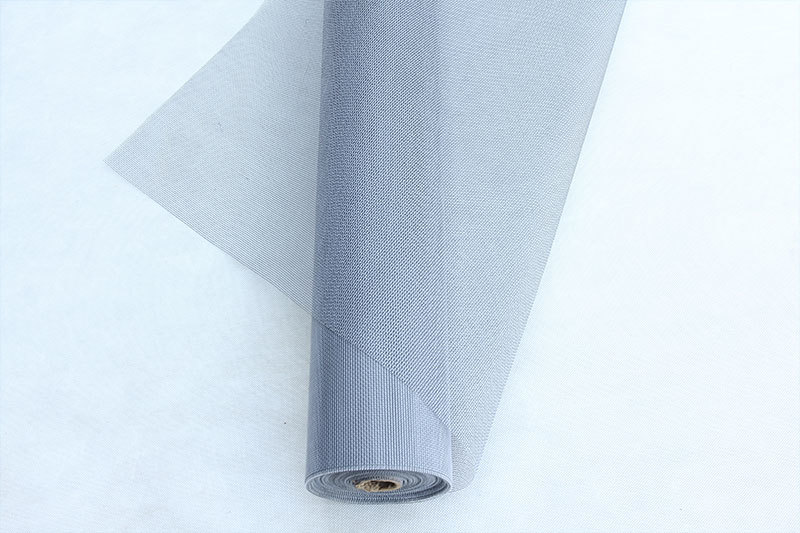Your Position: Home - - Development and application of glass fiber
Glass fiber: it is an inorganic non-metallic material with excellent performance. There are many kinds. Its advantages are good insulation, strong heat resistance, good corrosion resistance and high mechanical strength, but its disadvantages are brittle and poor wear resistance. It is made from glass balls or waste glass through high-temperature melting, drawing, winding, weaving and other processes. The diameter of its monofilament is several microns to more than 20 meters, which is equivalent to 1 / 20-1 / 5 of a hair. Each bundle of fiber filaments is composed of hundreds or even thousands of monofilaments. Glass fiber mesh is usually used as reinforcement material in composite materials, electrical insulation material, thermal insulation material, circuit board and other fields of national economy.

According to shape and length, glass fiber can be divided into continuous fiber, fixed length fiber and glass wool; According to the glass composition, it can be divided into alkali free, chemical resistant, high alkali, medium alkali, high strength, high elastic modulus, alkali resistant and alkali resistant glass fibers.
The main raw materials for producing glass fiber are quartz sand, alumina and pyrophyllite, limestone, dolomite, boric acid, soda ash, mirabilite, fluorite, etc.
The production methods can be roughly divided into two categories: one is to directly make molten glass into fibers; One is to first make molten glass into glass balls or rods with a diameter of 20mm, and then heat and remelt them in various ways to make glass balls or rods with a diameter of 3-80 μ M U.M. The infinitely long fiber drawn by mechanical drawing method through platinum alloy plate is called continuous glass fiber, generally known as long fiber. The discontinuous fiber made by roller or air flow is called fixed length glass fiber, generally known as short fiber.
Glass fibers are divided into different grades according to their composition, properties and uses. According to the standard grade, E-grade glass fiber is the most widely used and widely used as electrical insulation material; Grade s is special fiber.
There are many classification methods for glass fibers, which can be generally classified from glass raw material composition, monofilament diameter, fiber appearance and fiber characteristics.
Alkali free glass fiber
Medium alkali glass fiber (C glass fiber)
High alkali glass fiber (a glass fiber)
Glass fiber monofilaments are cylindrical and can be divided into several types according to their diameters:
Coarse fiber: 30 μ m; Primary fiber: 20 μ m
Intermediate fiber: 10 μ m~20 μ m;
High grade fiber: 3 μ m~10 μ M U.M (also known as textile fiber);
Microfiber: monofilament diameter less than 4 μ m。 The different diameter of monofilament not only affects the performance of fiber, but also affects the production process, output and cost of fiber. General 5 μ m-10 μ M U.M fiber as textile products; ten μ m-14 μ M U.M fiber is generally suitable for twistless roving, non-woven fabric, chopped fiber felt, etc.
This is a new type of glass fiber, which is newly developed to meet the special use requirements and has some special excellent properties. It can be roughly divided into:
High strength glass fiber;
High modulus glass fiber;
High temperature resistant glass fiber;
Alkali resistant glass fiber;
Acid resistant glass fiber;
Ordinary glass fiber
Optical fiber;
Low dielectric constant glass fiber;
Conductive fiber, etc.
Glass fiber is higher than organic fiber in temperature resistance, non combustion, corrosion resistance, heat insulation and sound insulation, high tensile strength and good electrical insulation. But it is brittle and has poor wear resistance. The glass fiber used to manufacture reinforced plastics or reinforced rubber as a reinforcing material has the following characteristics, which make the use of glass fiber far more extensive than other types of fibers, and the development speed is far ahead. Its characteristics are listed below:
(1) High tensile strength and small elongation.
(2) High elastic coefficient and good rigidity.
(3) It has large elongation within the elastic limit and high tensile strength, so it can absorb large impact energy.
(4) It is an inorganic fiber with incombustibility and good chemical resistance.
(5) Water absorption is small.
(6) Good dimensional stability and heat resistance.
(7) Good processability, it can be made into different shapes of products such as strands, bundles, felts and woven fabrics.
(8) Transparent and transparent to light.
(9) The development of a surface treatment agent with good adhesion to resin was completed.
(10) Fatigue resistance
(11) not easy to burn, can be melted into glass beads at high temperature
Compared with traditional materials, glass fiber composites have two main characteristics, that is, performance designability and consistency between materials and components. The desired composite effect of glass fiber composites is that the properties of raw materials complement each other and produce superimposed effects, so as to have some excellent physical and chemical properties that raw materials do not have.
More information please contact www.xzhfiberglass.com
10
0
0
Previous: None
Comments
All Comments (0)